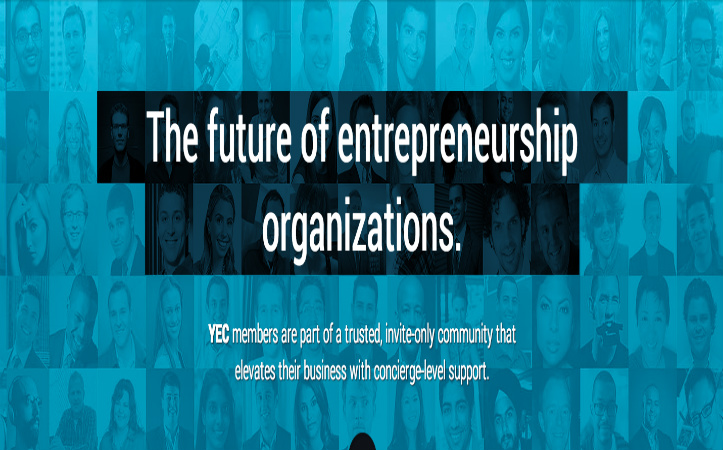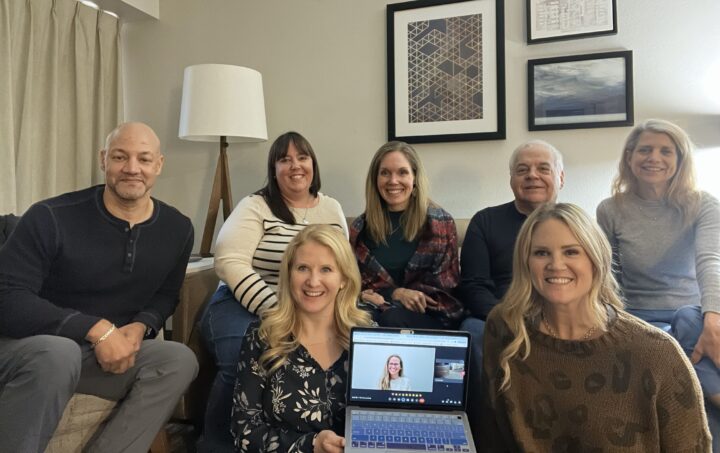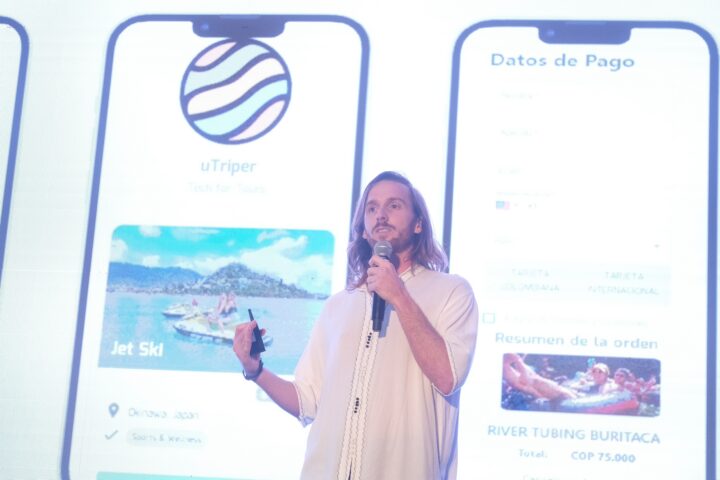I need a logo and branding materials for my new business. Any special advice on selecting the right designer for the job?
The following answers are provided by members of Young Entrepreneur Council (YEC), an invite-only organization comprised of the world’s most promising young entrepreneurs. In partnership with Citi, YEC recently launched BusinessCollective, a free virtual mentorship program that helps millions of entrepreneurs start and grow businesses.
1. Don’t Be Cheap
 If you have a $5 business get a $5 logo. I see so many articles about bootstrapping that suggest getting logo and branding material done on Fiverr. But you get what you pay for. There are a lot of things that need to be taken into consideration when designing a logo and branding materials, such as how it will look on social profiles. A $5 designer isn’t going to take that into consideration. – Jonathan Long, Market Domination Media
If you have a $5 business get a $5 logo. I see so many articles about bootstrapping that suggest getting logo and branding material done on Fiverr. But you get what you pay for. There are a lot of things that need to be taken into consideration when designing a logo and branding materials, such as how it will look on social profiles. A $5 designer isn’t going to take that into consideration. – Jonathan Long, Market Domination Media
2. Crowdsource Your Logo
 I used crowdSPRING for my logo and had a great experience. I had over 100 submissions and then chose the logo I liked best, awarding the winner with a cash prize. Tip: If someone has submitted a design for your logo that has promise, give feedback to the designer and help them get it to exactly where you want. If they know they are close to winning, they will go the extra mile to make it perfect. – Diana Goodwin, AquaMobile Swim School
I used crowdSPRING for my logo and had a great experience. I had over 100 submissions and then chose the logo I liked best, awarding the winner with a cash prize. Tip: If someone has submitted a design for your logo that has promise, give feedback to the designer and help them get it to exactly where you want. If they know they are close to winning, they will go the extra mile to make it perfect. – Diana Goodwin, AquaMobile Swim School
3. Build a Story
 We wanted our logo to come with a story and we wanted to help out local students. So we put together a business summary that included types of our products, things we did and did not want and our color desires; then we handed the one-page document to a university for a 29-daylogo challenge. Whoever won got a $250 bonus and a letter of recommendation from us, and the others got a lot of critique and experience. – Josh Sprague, Orange Mud
We wanted our logo to come with a story and we wanted to help out local students. So we put together a business summary that included types of our products, things we did and did not want and our color desires; then we handed the one-page document to a university for a 29-daylogo challenge. Whoever won got a $250 bonus and a letter of recommendation from us, and the others got a lot of critique and experience. – Josh Sprague, Orange Mud
4. Get Cheap Logos First, Then Pay More for an Award Winning One
 Most businesses have no clue what their logo really should be at the end of the day. Therefore, it may be worth sourcing multiple opinions from outsourced graphic designers who enable you to see a variety of options fast and for cheap. When you know what you don’t like, you’ll get closer to the logo you truly want. At that point, you can hire the right designer to deliver the perfect design. – Danny Wong, Blank Label
Most businesses have no clue what their logo really should be at the end of the day. Therefore, it may be worth sourcing multiple opinions from outsourced graphic designers who enable you to see a variety of options fast and for cheap. When you know what you don’t like, you’ll get closer to the logo you truly want. At that point, you can hire the right designer to deliver the perfect design. – Danny Wong, Blank Label
5. Know Your Budget and Get Multiple Quotes
 Graphic design prices vary greatly. Have an idea of what you want to spend before you begin the buying process; this will eliminate some services for you right away. As with any business vendor decision, get three quotes. This gets you familiar with the buying process, interviewing vendors, reviewing contracts and weighing the options to make the best possible decision for your business needs. – Nicole Munoz, Start Ranking Now
Graphic design prices vary greatly. Have an idea of what you want to spend before you begin the buying process; this will eliminate some services for you right away. As with any business vendor decision, get three quotes. This gets you familiar with the buying process, interviewing vendors, reviewing contracts and weighing the options to make the best possible decision for your business needs. – Nicole Munoz, Start Ranking Now
6. Know What You Like
 Look at the designer’s example and ask yourself if it’s your style. Does it represent you as a person? Does it represent you as a brand? Is it something on which you want your name? You want something that pleases you or in the end you may feel regretful. Chances are that if you like your brand and logo, then other people will as well. – Stanley Meytin, True Film Production
Look at the designer’s example and ask yourself if it’s your style. Does it represent you as a person? Does it represent you as a brand? Is it something on which you want your name? You want something that pleases you or in the end you may feel regretful. Chances are that if you like your brand and logo, then other people will as well. – Stanley Meytin, True Film Production
7. Know Their Style
 It’s easy to assume that a graphic designer is going to give you whatever you’re looking for, but things can go wrong quickly. Some designers are illustrators while others enjoy creating graphics digitally. Depending on the style that you feel is in-line with your business, get a designer that has a history of creating branding materials in line with your vision. – Cody McLain, SupportNinja
It’s easy to assume that a graphic designer is going to give you whatever you’re looking for, but things can go wrong quickly. Some designers are illustrators while others enjoy creating graphics digitally. Depending on the style that you feel is in-line with your business, get a designer that has a history of creating branding materials in line with your vision. – Cody McLain, SupportNinja
8. Make Sure They Ask You Questions
 Pay attention to how much they ask about you and your business. They should want to get to know you more intimately, as business and personal styles tend to reflect each other. When in search for our designer, he practically interrogated me and gave me tons of homework, such as listing my favorite brands and writing down my feelings from the brands I favored. Them asking questions is key. – Souny West, CHiC Capital
Pay attention to how much they ask about you and your business. They should want to get to know you more intimately, as business and personal styles tend to reflect each other. When in search for our designer, he practically interrogated me and gave me tons of homework, such as listing my favorite brands and writing down my feelings from the brands I favored. Them asking questions is key. – Souny West, CHiC Capital
9. Always Check References
 A designer can have an amazing portfolio but be a nightmare to work with. I always take time to check in with past clients, especially if the designer did not come as a referral from a colleague. One time, I followed up with a business that was in the portfolio of a designer I was considering, only to find out that the designer didn’t even design the website in his portfolio! Talk to past clients. – Natalie MacNeil, She Takes on the World
A designer can have an amazing portfolio but be a nightmare to work with. I always take time to check in with past clients, especially if the designer did not come as a referral from a colleague. One time, I followed up with a business that was in the portfolio of a designer I was considering, only to find out that the designer didn’t even design the website in his portfolio! Talk to past clients. – Natalie MacNeil, She Takes on the World
10. Seek Similar Industries Within Their Clientele
 An easy and safe bet is to look at their client roster and see if anything not only stands out, but looks similar. Chances are if they understand a previous client who is in a similar realm, they will also replicate a similar style or understand the message you are trying to convey. Doing this increases your chances of getting the right design for the job. – Kumar Arora, Aroridex, Ltd.
An easy and safe bet is to look at their client roster and see if anything not only stands out, but looks similar. Chances are if they understand a previous client who is in a similar realm, they will also replicate a similar style or understand the message you are trying to convey. Doing this increases your chances of getting the right design for the job. – Kumar Arora, Aroridex, Ltd.
11. Use 99designs
 On 99designs you set-up a “design contest” and let dozens of artists take a crack at interpreting your desired logo and brand materials. If you go with a local web designer you will likely be limited to one or two interpretations of your brand, but with 99designs you’ll have many more options. Other popular services that allow you to get multiple logo designs include CrowdSPRING and LogoGarden. – Obinna Ekezie, Wakanow.com
On 99designs you set-up a “design contest” and let dozens of artists take a crack at interpreting your desired logo and brand materials. If you go with a local web designer you will likely be limited to one or two interpretations of your brand, but with 99designs you’ll have many more options. Other popular services that allow you to get multiple logo designs include CrowdSPRING and LogoGarden. – Obinna Ekezie, Wakanow.com
12. Work With Design Students
 Like any startup, we’ve been there. You create an RFP for different professional design companies and send it out, but when you start receiving their proposals you balk. How can you justify $20k for a new logo? Instead, we started to approach design school students. The price tag went down to $5k for amazing work and flexibility. – Daniele Gallardo, Actasys
Like any startup, we’ve been there. You create an RFP for different professional design companies and send it out, but when you start receiving their proposals you balk. How can you justify $20k for a new logo? Instead, we started to approach design school students. The price tag went down to $5k for amazing work and flexibility. – Daniele Gallardo, Actasys









